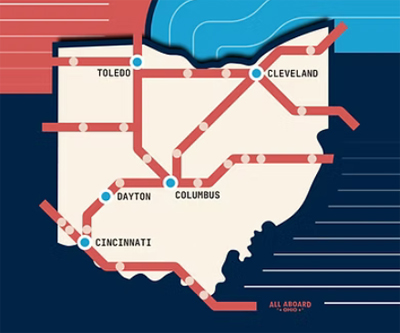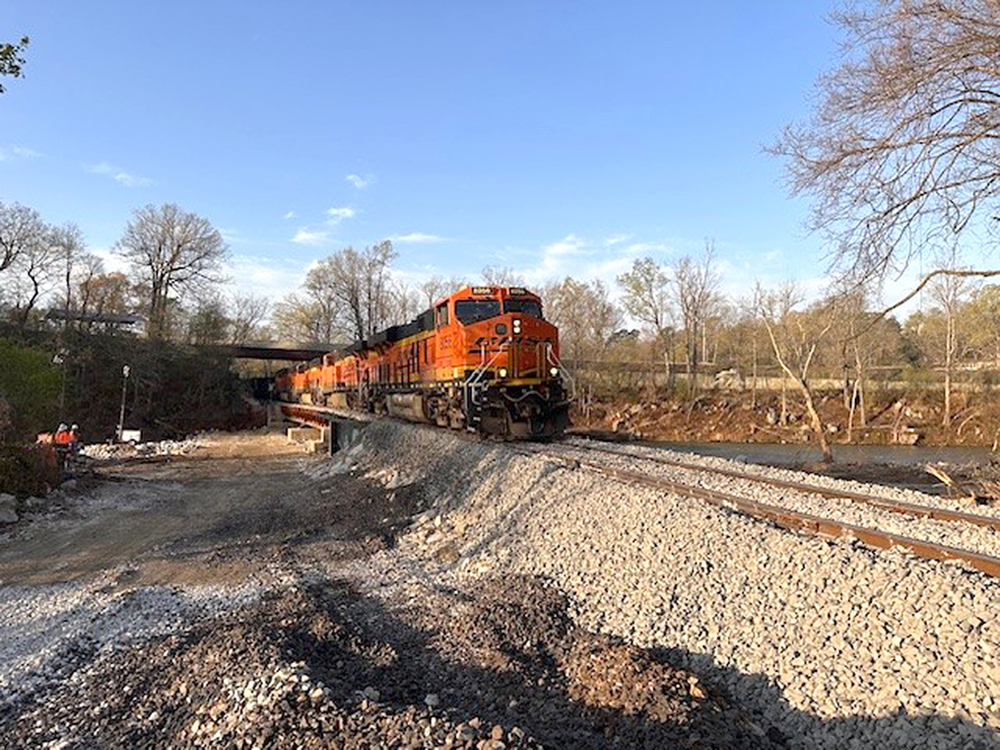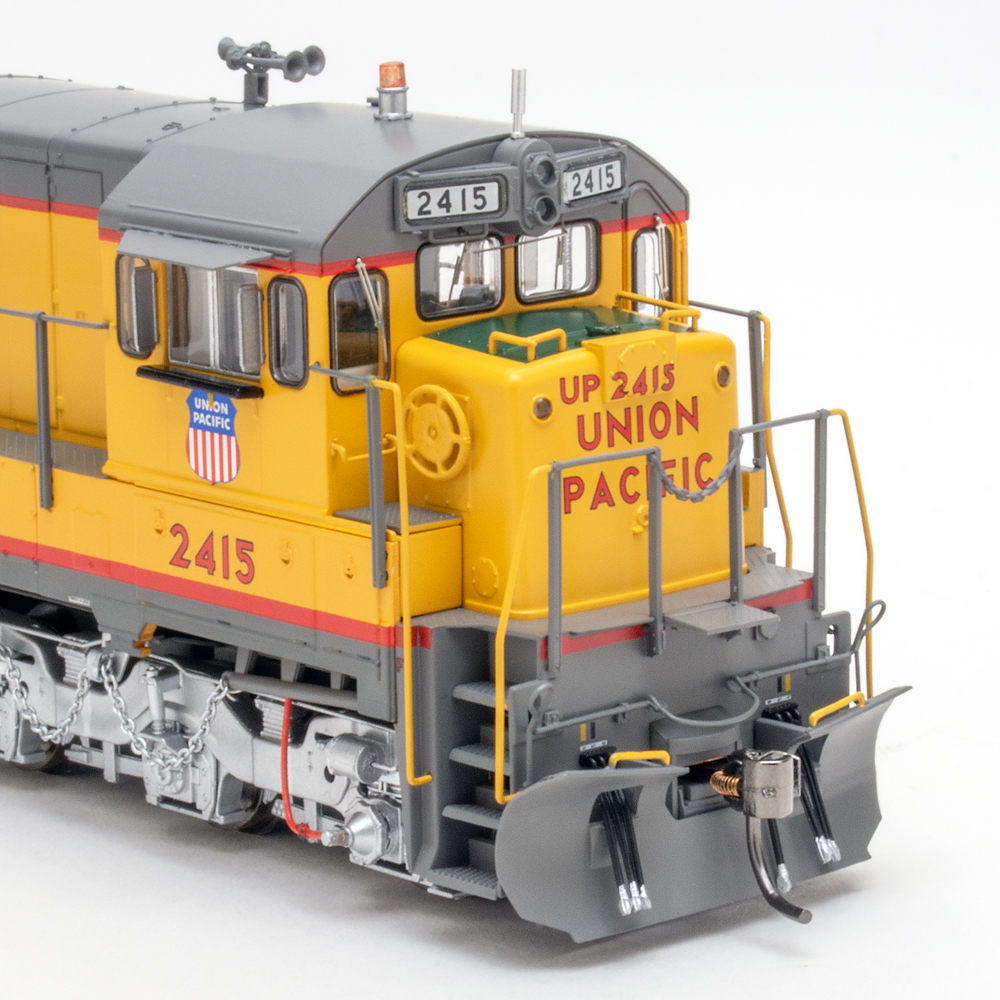
O gauge Chicago Great Western Legacy F7 A-A set no. 2033260 by Lionel
The Chicago Great Western (CGW) is one such railroad. The line’s diesel-era red hues look terrific.
The 1,400 mile railroad was one of those old-school granger systems serving America’s breadbasket. It crisscrossed the Midwest connecting Chicago with Omaha, and Minneapolis with Kansas City, and points in between.
The railroad was an innovator trying out gasoline- and battery-powered railcars. It added diesel engines and 2-10-4s, and was even an intermodal pioneer of sorts with trailer-on-flatcar shipments.
The railroad sought several merger partners over the years, but the only deal consummated was with the Chicago & North Western in 1968. Sadly, C&NW then abandoned most of the CGW lines.
Today’s test subject is a model of the F7 from Electro-Motive. The 1,500-h.p. diesel was built from 1947 to 1953. More than 2,300 A units and 1,400 cabless B units were made for the North American market. A number have been preserved in museums – some in operational condition.
Opening the box
Unwrapping one of the A-unit pair, the red and black livery was a natural for showing cast-in rivet detail often obscured by darker colors. Trust me: rivets are not normally the first thing I see.
The model has the classic Electro-Motive bulldog nose. The red pilot has add-on uncoupler levers and brake line detailing. There are wire grab irons matching the front contour of the body.
The center of the nose has a forward access hatch with a cast-in door handle. There are grab irons on both sides of the door. The headlight is in the middle of the door, and an oscillating light is at the peak of the nose.
The number boards are illuminated. Just above the number boards are classification lights – green when running forward and red when running opposite.
The stand-out details are the grab irons running up and over the nose. At about the window level the grab iron transforms into a handrail of sorts, running back to the handrails for the cab door. This is a great visual feature you don’t see often (based on the actual railroad’s practices).
The forward windows have a single wiper arm and handrails above each pane.
All the doors open with the press of your finger, and all have silver-painted kick plates. Add-on handrails bracket the door cab.
Paint and decoration are superb. Applied items, such as the builder’s plate and the Great Western roundels, added some class to the unit.
The roof is painted a satin black. Mid-frame are three radiator fans and two exhaust stacks plus lift rings.
There are metal grills running the length of the unit, and brakeman’s steps and handrails are on each corner. The rear of the body has a slightly flexible diaphragm for bridging between units. There’s a scale-foot gap between them.
The Lionel model looks great, but how does it run? My expectations were high, and they were exceeded.
On the test track
I had really expected a challenge pairing two powered units with the LionChief app. Boy, was I wrong. After a couple of finger taps, they were paired and the app knew which was the lead unit.
The sound system was dynamite! It had the full mix of engine startup sounds as well as running tones. It had the bonus of mixing in the moaning and groaning sounds of steel that was being forced to move when it really prefers inertia.
The sound package allows you to listen to a start-to-finish crew dialog should you desire. I believe I mentioned this in my previous review of the Lionel Daylight Cab-Forward steam locomotive. I want to type “Insert little heart shapes here,” but I don’t think the editor will allow that! [He’s right, I won’t. – Ed.]
The next four-star feature is the blast of smoke from both diesels! Strap on a long train, run it slowly, and it will crank out smoke that makes it look like the pair are pulling the heaviest coal train ever!
Want a visualization of that? Take a can of air freshener, tilt it with the nozzle up, and hold the button down, full-blast. Fortunately the app lets you easily adjust the output. It’s been years since my basement had that smoke-unit fog at about the 7-foot height.
Sounds good and makes terrific smoke, but this set is supposed to haul trains. Well, it does that wonderfully, too. Drawbar pull for the units was 2 pounds, 8 ounces. I did a double take on that and checked it several times, but you are getting the power of four can-style motors.
Speed range was excellent. The command low speed was 1.6 scale miles per hour, while the conventional mode was very close at 1.9 scale mph. Our high speed was 67 scale mph.
The O gauge F7 combination was a dream to operate. The set was incredibly responsive to commands. Running it at a slow speed, I would change the direction and the train would come to a controlled stop, change direction, and speed back up. Oh, when trying this, I discovered some of my rolling stock didn’t play well in the sudden change in direction (empty hoppers and spine cars specifically), so don’t try it at high speed!
After years of being happy running a powered unit with one or more unpowered locomotives, this set has me rethinking that. The Lionel F7s deliver performance, great sound, and the pulling power you need!
Locomotive courtesy of Sommerfeld’s Trains & Hobbies, Butler, Wis.













